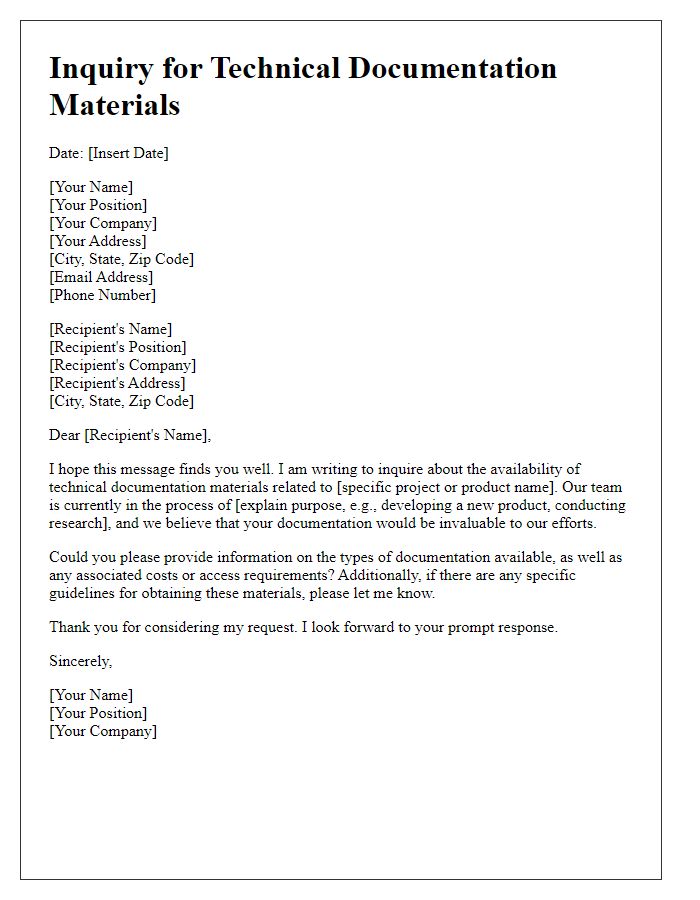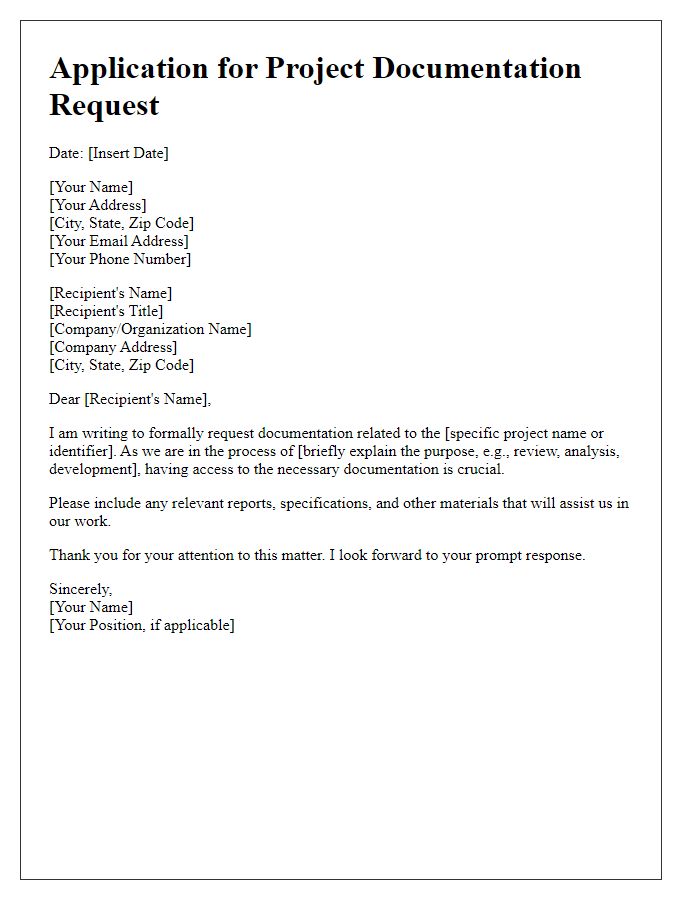If you've ever found yourself in need of technical documentation and didn't know where to start, you're not alone! Crafting the perfect request can make a world of difference in obtaining the information you need efficiently. In this article, we'll walk you through a simple yet effective letter template that will help you articulate your request clearly and professionally. So, let's dive in and discover how to make your technical documentation requests stand out!

Clear Subject Line
A clear subject line is crucial for effective communication in technical documentation requests. It should accurately reflect the content and purpose of the request to ensure quick recognition by the recipient. For instance, a subject line such as "Request for Technical Documentation on API Integration for Project X" immediately informs the reader about the specific documentation needed and its relevance to Project X, which might involve software development and programming tasks involving an Application Programming Interface (API). Including specific details, such as the date of the request or the relevant version of the software, adds clarity, making it easier for the recipient to locate the pertinent documentation and respond promptly.
Specific Documentation Details
Technical documentation requests require precise details for effective understanding and implementation. Requests should specify the document type, such as user manuals, installation guides, API documentation, or troubleshooting procedures. Essential details include the version number of the software or hardware involved, relevant updates or patches since the last documentation release, and any specific features or functionalities that need clarification. Additionally, indicating the target audience, like end-users, system administrators, or developers, enhances the documentation's relevance. Clear submission deadlines, such as company-wide deadlines or project milestones, ensure timely completion and support continual improvement processes within teams.
Reason for Request
A technical documentation request is essential for understanding the specifications and operational guidelines of software systems, hardware devices, or industrial equipment. Accurate documentation facilitates knowledge transfer, ensuring that both users and technicians clearly comprehend usage instructions, maintenance procedures, and troubleshooting steps. Detailed resources enhance compliance with safety regulations (like OSHA standards) and support adherence to industry practices across various sectors, including Information Technology and Manufacturing. Proper documentation can prevent operational failures and significantly reduce downtime (a period when equipment is non-operational), ultimately improving productivity and enhancing user experiences.
Contact Information
Contact information for technical documentation requests includes various key details. The primary individual should be identified by their full name, ensuring clarity for communication. Inclusion of a professional title, such as Technical Writer or Product Manager, helps establish credibility. Next, the email address serves as the primary point of contact, ideally reflecting the organization's domain. A direct phone number facilitates immediate inquiries and enhances responsiveness. Lastly, the physical address of the organization, including street name, city, state, and postal code, provides legitimacy and an option for formal correspondence or in-person meetings.
Deadline for Response
Submitting technical documentation requests requires precise timelines for response. A deadline ensures efficient project management and product development processes. For instance, a request submitted to the product development team on March 1st may require responses by March 15th, allowing for feedback incorporation within development cycles. Clearly defined deadlines, like two weeks for altering system diagrams or updating user manuals, facilitate smoother workflows and prevent project delays. This practice is essential in industries like software development and engineering, where updates and revisions must be synchronized with iterative release schedules.













Comments